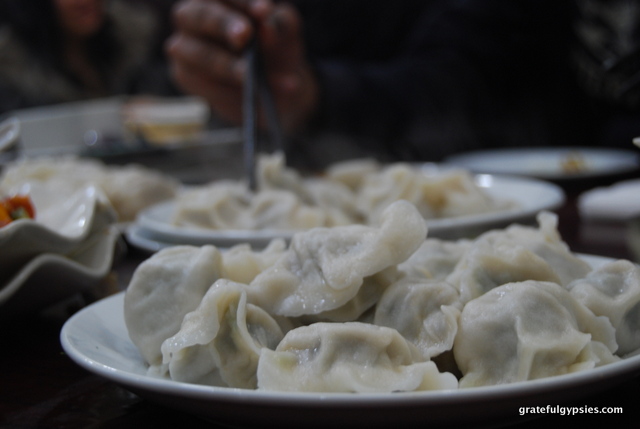How to Use the 把 Structure Posted by sasha on Oct 3, 2016 in Vocabulary
If you’ve been studying Chinese for a while, chances are you’ve encountered the dreaded 把 (bǎ) structure by now. This has no equivalent in English, but it’s extremely common in Chinese and thus critical to learn. To help clear the air, here’s a short, basic guide to this important structure in Chinese grammar.
What is the 把 Structure?
Just like in English, the basic word order for a sentence in Chinese is: Subject – Verb – Object:
我吃饺子 (wǒ chī jiǎo zi)
I eat dumplings.
When using 把, the word order of a sentence totally changes: Subject – 把 – Object – Verb:
我把饺子吃了 (wǒ bǎ jiǎo zi chī le)
I ate the dumplings.
We now have a Subject-Object-Verb order, with 把 coming before the object. As you may have guessed, this structure is used to place emphasis on the object and what is done with it. What happened to the dumplings in the example above? They got eaten, of course, because dumplings are amazing. There has to be some sort of action taken on the object – it gets used, affected, or changed. Therefore, some verbs can’t be used with this structure. We’re not trying to get into the nitty gritty today, though – just trying to introduce this important structure and give you a basic understanding.
Uses of 把
There are many ways you can use this structure. Let’s take a look at some of the most common:
把 + 到 (dào): indicates that the object has arrived somewhere
我把这张表送到办公室
wǒ bǎ zhè zhāng biǎo sòng dào bàn gōng shì
I delivered this form to the office.
把 + 在 (zài): indicates that the object stands somewhere
我把自行车放在楼下了
wǒ bǎ zì xíng chē fàng zài lóu xià le
I put the bike downstairs.
把 + 给 (gěi): indicates that the object has been given
请把这个文件交给老板
qǐng bǎ zhè ge wén jiàn jiāo gěi lǎo bǎn
Please send this file to the boss.
把 + 成 (chéng): indicates that the object has been changed
他把这篇文章翻译成英文
tā bǎ zhè piān wén zhāng fān yì chéng yīng wén
He translated this article into English.
We could get more in-depth and talk about negative statements and asking questions, but just focus on the basics for now and try using 把 in the ways listed above. As you get more comfortable with this structure, you can dive a bit deeper. Here’s a great introductory video from the Chinese Grammar Viki page on YouTube so you can actually hear some examples:

Build vocabulary, practice pronunciation, and more with Transparent Language Online. Available anytime, anywhere, on any device.
About the Author: sasha
Sasha is an English teacher, writer, photographer, and videographer from the great state of Michigan. Upon graduating from Michigan State University, he moved to China and spent 5+ years living, working, studying, and traveling there. He also studied Indonesian Language & Culture in Bali for a year. He and his wife run the travel blog Grateful Gypsies, and they're currently trying the digital nomad lifestyle across Latin America.





Leave a comment: